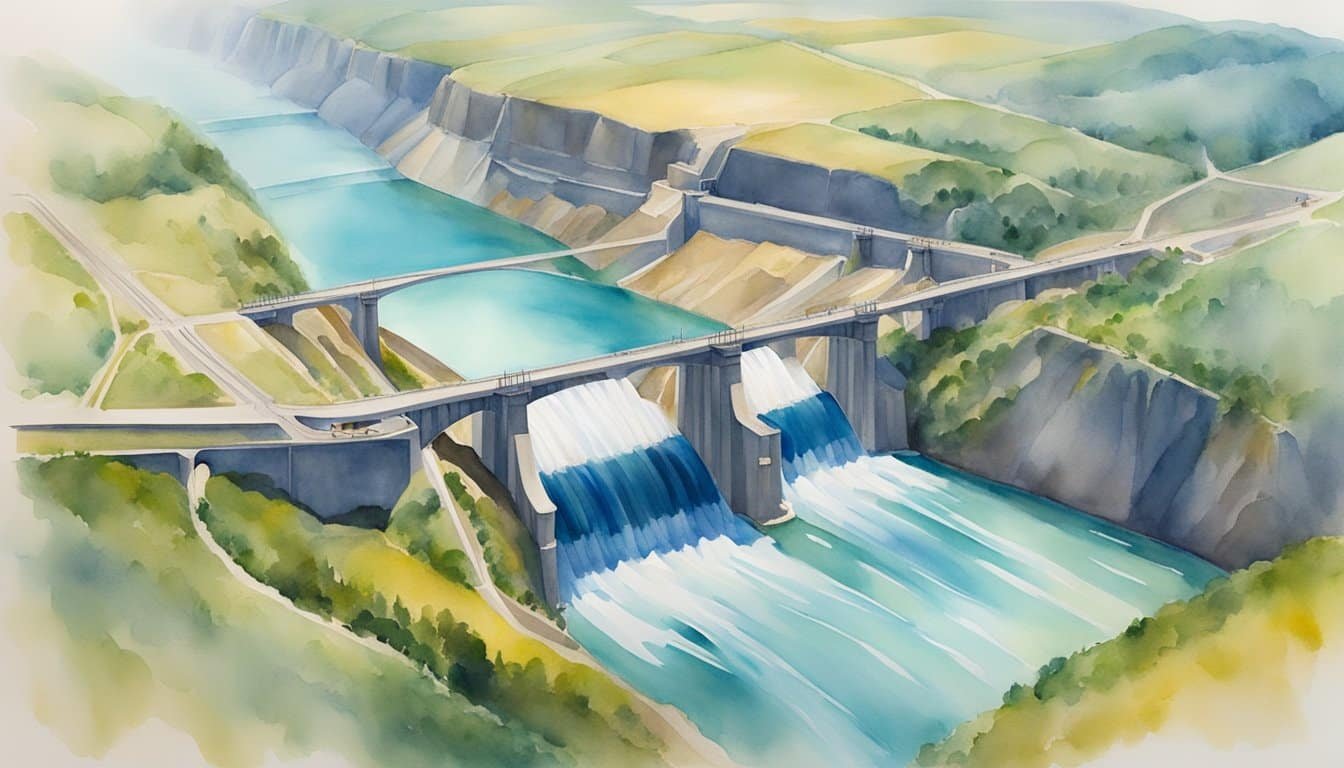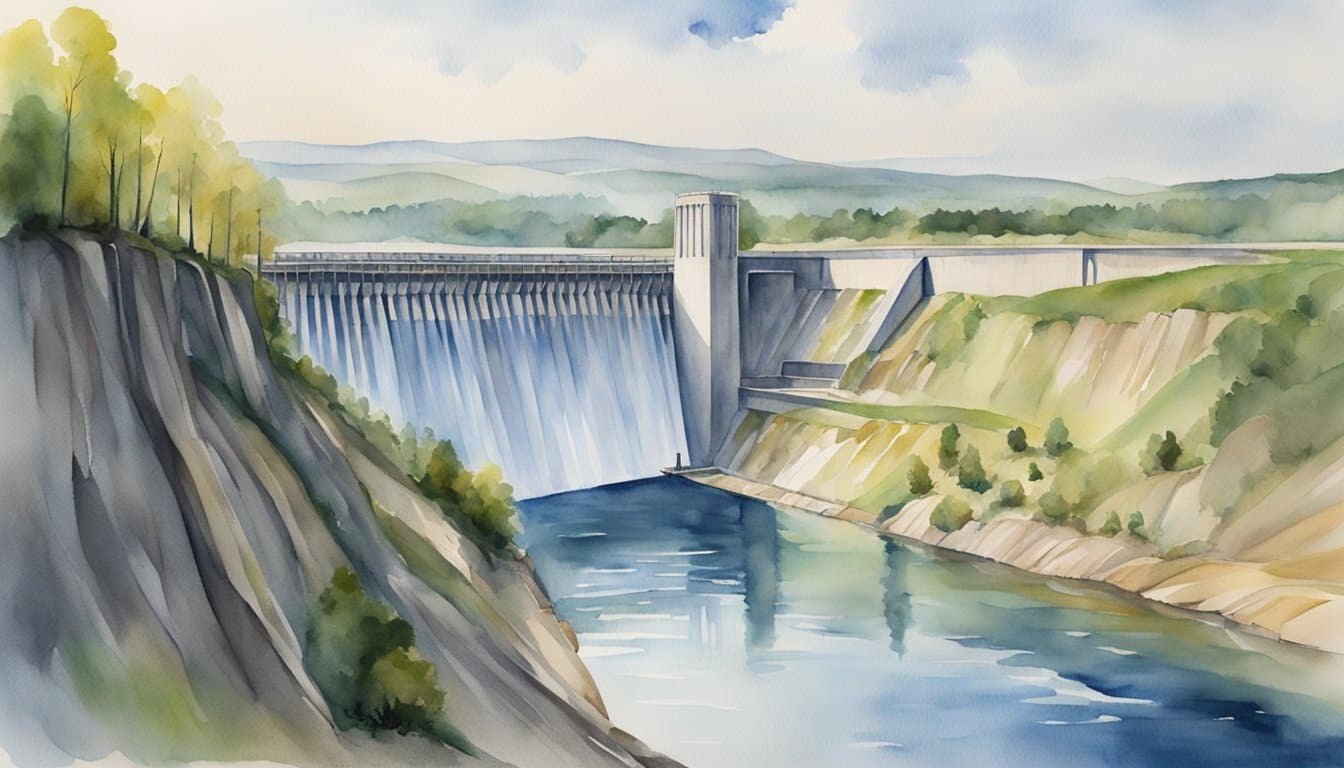Overview of Ukraine Dams and Hydroelectric Power

Ukraine’s landscape is dotted with numerous dams, playing a crucial role in energy production and water management. The interplay between these structures and the natural flow of rivers shapes much of the country’s hydroelectric potential.
The Strategic Importance of Dams in Ukraine
Dams in Ukraine are key installations critical for energy, irrigation, and flood control. They harness the flow of major rivers like the Dnipro, significantly contributing to the country’s energy mix through hydropower. This form of energy generation is especially vital because it is renewable and helps reduce reliance on fossil fuels. The reservoirs created by these dams are also important for maintaining water supply in times of drought, ensuring agriculture and nearby communities are sustained.
Kakhovka Dam: An Overview
The Kakhovka Dam is one of the most significant structures on the Dnipro River. Located near the town of Nova Kakhovka, it forms the Kakhovka Reservoir. The hydroelectric plant at the dam provides important energy resources to Ukraine and plays a part in the country’s electrical grid stability. Beyond power generation, the Kakhovka Reservoir is instrumental in water supply and irrigation, making it a multifaceted asset in the region.
The Risks and Impacts of War on the Dam Infrastructure
Amidst the chaos of conflict, the integrity of critical infrastructure like dams becomes a matter of both human safety and ecological concern. In Ukraine, particularly, the Kakhovka Dam has been thrust into the spotlight, with threats from the ongoing war posing a multitude of potential disaster scenarios.
Potential Disaster Scenarios
- Dam Collapse: A worst-case scenario includes the structural failure of the dam due to military actions, which could lead to massive flooding downstream.
- Ecological Disaster: Substantial damage to the dam could also precipitate an ecological crisis, affecting water quality and local ecosystems.
- Civilian Threats: The area’s civilian population faces significant risks in the event of a dam breach: inundated homes, disrupted livelihoods, and the need for mass evacuations.
Current State and Risks to Kakhovka Dam
The Kakhovka Dam, an integral piece of infrastructure nestled on the Dnipro River, has experienced threats of physical damage from the invasion. Occupied by Russian forces, the dam’s control has become a strategic military objective, heightening the risk of an intentional or collateral damage-induced collapse. Despite current occupation, significant portions of the dam and adjoining reservoir areas remain in the Ukrainian-controlled territory, creating a complex and precarious situation for both military strategy and civilian safety. The sustained stability of the Kakhovka Dam is critical, not just to the immediate area, but in preventing a cascade of environmental and humanitarian crises.
Humanitarian and Geopolitical Ramifications

The conflict in Ukraine has sparked severe consequences that stretch beyond the battlefield, significantly impacting both local populations and the geopolitical stage.
Effects on Local Populations
Southern Ukraine has faced critical challenges in the wake of infrastructure damage, notably the destruction of water supply systems. Displacement is a dire issue, with countless residents being forced to leave their homes to escape the violence or the outcomes of infrastructure disruptions such as potential flooding. The interruption of essential services has piled on the hardship for the local populace, spotlighting the profound humanitarian crisis unfolding in the region.
President Volodymyr Zelensky and his administration are under immense pressure to provide solutions for these affected areas, while also navigating the complex web of international relations and conflict resolution. At the same time, reports of actions by a Russian-installed mayor have surfaced, adding another layer of tension and calls for international humanitarian aid.
International Response and Aid
The global community, spearheaded by organizations like the United Nations and various NGOs, has stepped in to alleviate some of the distress through an organized aid response. Contributions range from basic necessities for those displaced to technical assistance in restoring critical infrastructure. Additionally, the International Atomic Energy Agency has shown concern over the safety of nuclear facilities affected by the conflict, which could have far-reaching implications on public health and environmental safety. The international handling of the crisis underscores the complex interplay between humanitarian action and geopolitical strategy in conflict zones.

